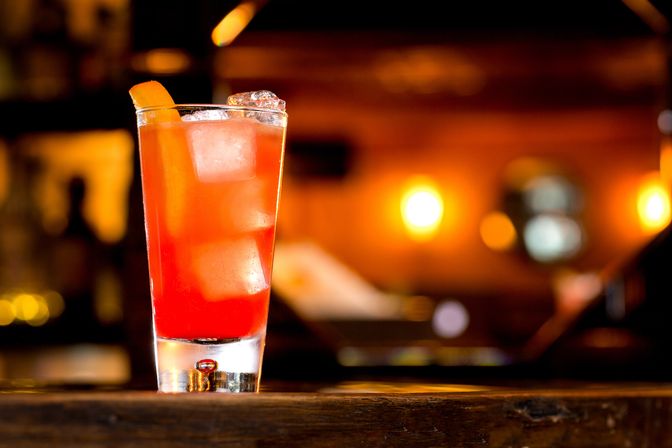
The classic two-ingredient Garibaldi cocktail embodies the perfect summer cocktail: sweet, refreshing, and easy to drink. Well-made versions hit all the right notes: The bitterness and complexity of Campari married to the fruit-filled simplicity of orange juice, while a top layer of foam gives a rich texture. This versatile beverage goes nicely as an aperitivo before dinner, at brunch, or for an afternoon pick-me-up. Though there is some finesse to making a respectable Garibaldi, you won’t need much in the way of complicated liqueurs or specialty bitters.
The cocktail is named after Giuseppe Garibaldi, the 19th-century revolutionary who successfully united Italy. Aptly symbolizing Italian unification in a glass, the Garibaldi joins the north (Lombardy being the birthplace of Campari) with the south (oranges grown in Sicily). You can also draw a parallel between the color of the drink and the red-hued shirts worn by Garibaldi’s freedom fighters — some say its bright hue is the reason it’s called the Garibaldi. Curiously, Garibaldi adopted his trademark style of red shirt, poncho, and hat while living in exile in South America.

The Garibaldi cocktail recipe
Ingredients
- 1.5 ounces Campari
- 4 ounces orange juice
- Orange wedge (for garnish)
Method
- Fill a small highball glass with ice.
- Add the Campari and orange juice, then stir to combine.
- Garnish the glass with the orange wedge.

Refining the Garibaldi
Despite having just two ingredients, the Garibaldi isn’t ruin-proof. The trick is to use fresh orange juice — just squeezed (and strained) if possible — and froth it up before mixing. You can do this by dry shaking, putting the juice in the blender at a high speed for a few seconds, or even using a milk frother.
The cocktail bar Dante in New York City, serves one of the world’s best Garibaldis — indeed it’s the flagship drink of the West Village spot. Their secret is pressing an orange through a Breville juicer right before serving. A Breville isn’t essential, though; the success rests on properly aerating and frothing the juice, which also takes some of the edges of the Campari.
You can also do variations on the Garibaldi. The Garibaldi spritz pulls back on the Campari (to 1.5 ounces) and adds some effervescence with prosecco poured on top. For a detour from the orange-centric base, experiment with other citrus flavors like blood orange — which gives an even more vivid color to the drink — grapefruit or even kumquat. If your juice is too tart, you can add half an ounce of simple syrup to bring the cocktail to life.
Once you’ve mastered the Garibaldi, you can try your hand at Italy’s other many cocktails made with Campari. The Negroni is the boozy big brother of Garibaldi made with gin and sweet vermouth. White wine, Campari, and soda water make a surprisingly satisfying combination in the Bicicletta, while the Jungle Bird pushes the envelope by pairing tropical flavors (lime juice, pineapple juice) and dark rum with the Italian liqueur.

Try a Campari spritz
While the Garibaldi cocktail is a refreshing drink for summer or warm-weather days, it’s not the only Campari-based summer cocktail to enjoy. A Campari spritz mixes the slightly bitter Italian spirit, grapefruit-flavored sparkling water, and Prosecco for a summer cocktail that rivals the Garibaldi. And while the Campari spritz has slightly more ingredients, it’s fairly simple to make.
Ingredients
- 2 ounces Campari
- 3 ounces of chilled Prosecco
- 1 ounce of chilled grapefruit-flavored sparkling water (if you don’t like grapefruit, use unflavored sparkling water)
- Orange wedgge (for garnish)
Method
- Fill a glass with ice (a large stemmed glass is preferred).
- Stir in the Campari.
- Top with the sparkling water and the Prosecco.
- Garnish with the orange wedge.
- Serve immediately.
Editors' Recommendations
- How to make a killer meatloaf (and it’s easier than you think)
- How to make the best vodka gimlet for a twist on a classic
- How to craft a heavenly vodka martini: Shaken or stirred
- We know the most popular cocktails — Try these underrated drinks instead
- This is how to make the perfect dirty martini


